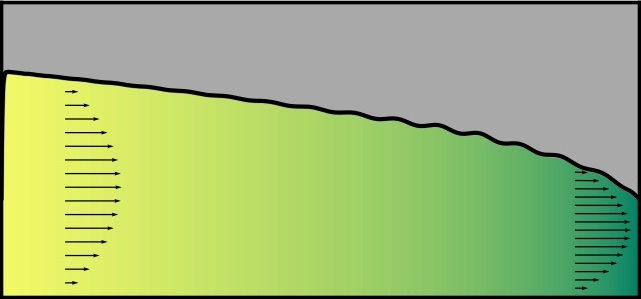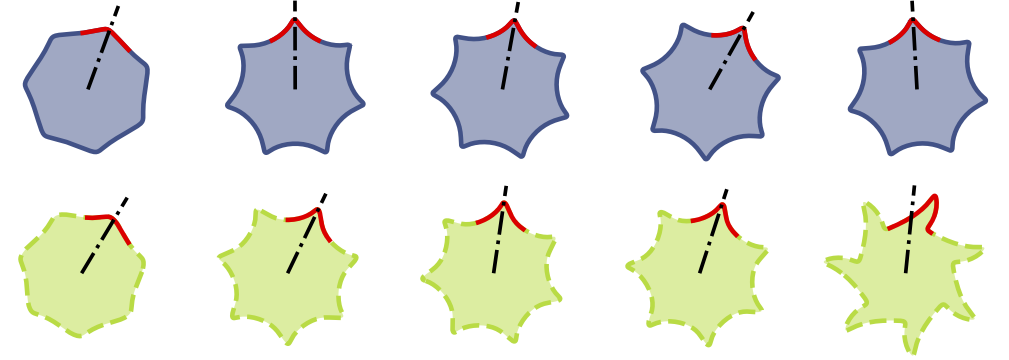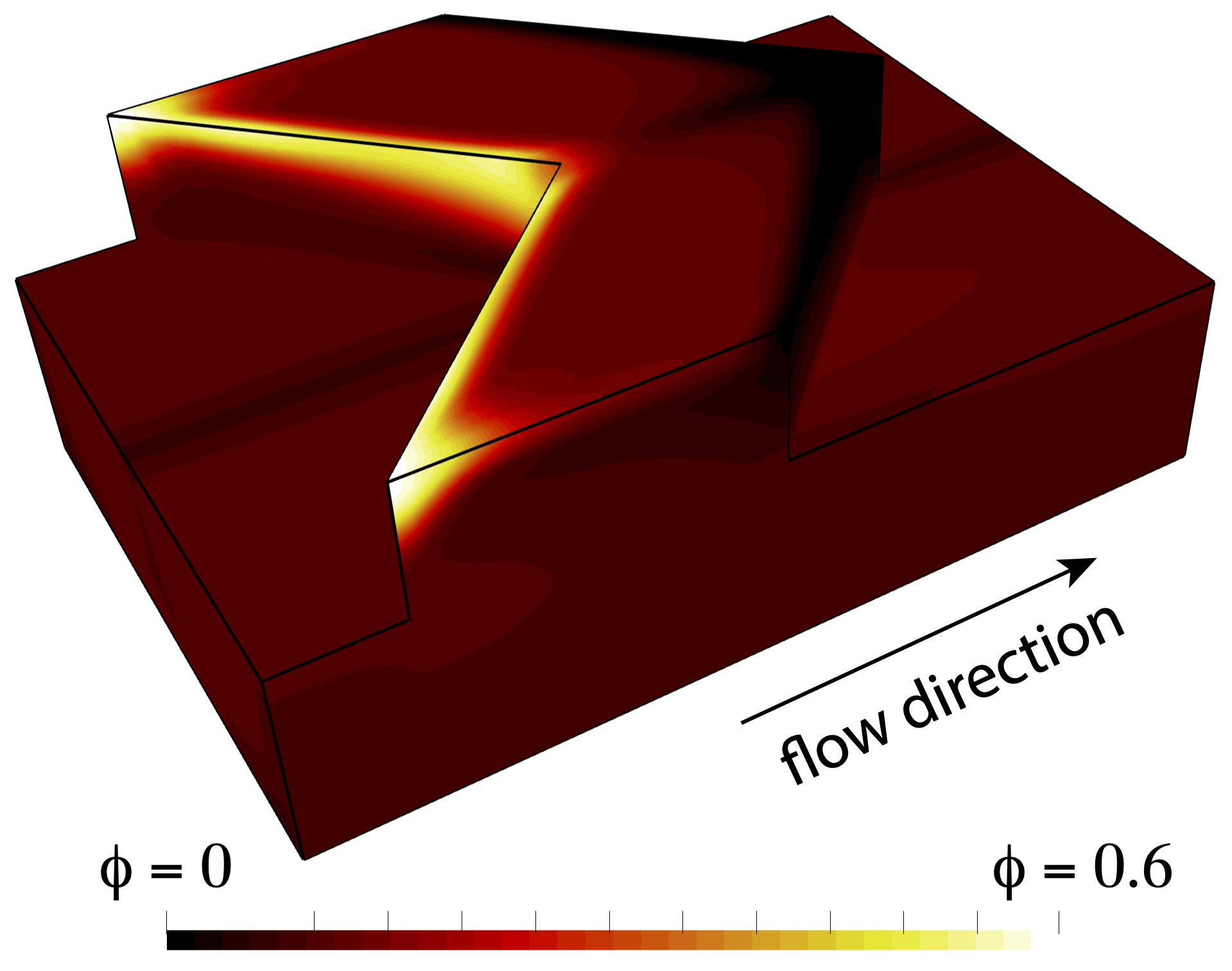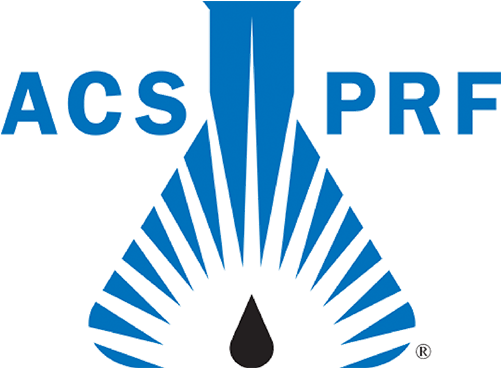Research our contributions to discovery
Soft hydraulics*
As the pioneers of the nascent field of microscale fluid–structure interactions, we developed the first theory of flow-induced deformation of microchannels, which was then extended to rationalize the original experimental measurements on flow in compliant microchannels performed at MIT. In passing, we rewrote the book on the fluid mechanics of blood vessels. Research supported by the National Science Foundation.
Fluid–structure interactions via nonlocal formulations
From paint and do-it-yourself home repair to diapers and hygiene products, soft coatings involve the fluid-layer-mediated adhesion of an elastic material to a rigid substrate. We seek to enable predictive, multiscale simulation of flow-induced mechanical deformation, including adhesion/debonding and material failure, using nonlocal formulations of continuum mechanics. Figure courtesy of public report by S. A. Silling. Research supported by the National Science Foundation.
Rheophysics of thermal interface materials
Complex paste-like mixtures are used as thermal interface materials (TIMs). Their rheology impacts the lifetime performance of a TIM. Through novel experiments and data-driven rheological characterization, we demonstrated both stress relaxation and buildup, providing the first calibrated models of these soft materials' thixotropic rheophysics. Research supported by Purdue's Cooling Technologies Research Center.
Dynamics of fluid interfaces, multiphysics interactions & control
We seek to elucidate the physics underlying the (in)stability of fluid-fluid interfaces in the presence of multiphysics interactions, such as deformable geometries, external forcing, imposed magnetic fields, etc. Our ultimate objective is to enable non-invasive control of patterns. Specifically, we were the first to demonstrate the generation of nonlinear periodic waves on a ferrofluid interface via an external magnetic field. Research supported by the National Science Foundation.
Gas-liquid flows and heat transfer in packed-bed reactors
We blend computational fluid dynamics with microgravity measurement of gas-liquid flows. We proposed new dimensionless Weber-like numbers that delineate bubble entrapment from bubble displacement under different gravity conditions. We analyzed the packed-bed research experiment (PBRE) performed by NASA aboard the International Space Station and developed improved interphase drag correlations for CFD. Research supported by NASA.
Particle-laden flows and heat transfer in complex and 3D geometries
We enabled predictive simulation of flows of and thermal transport in dense suspensions via two-fluid continuum models by developing open-source computational codes using the OpenFOAM framework (twoFluidsNBSuspensionFoam). We discovered that thermal and shear gradients in dense suspensions can have both synergistic and antagonistic effects on particle migration. Research supported by the American Chemical Society's Petroleum Research Fund.









